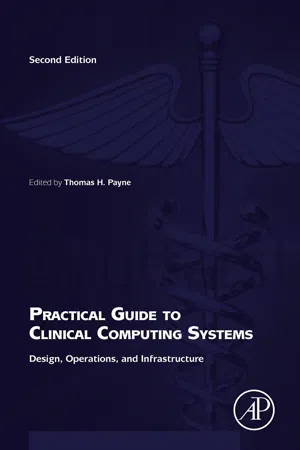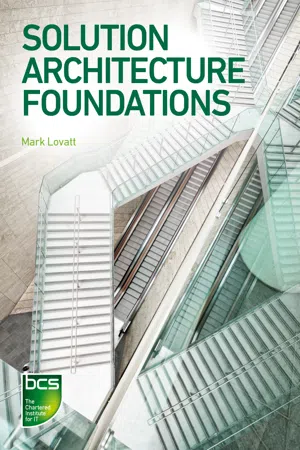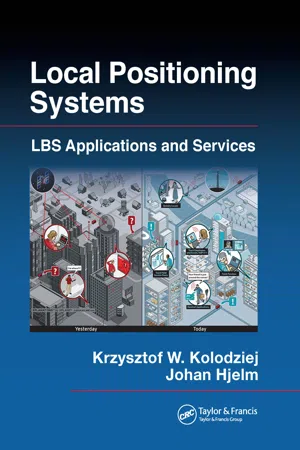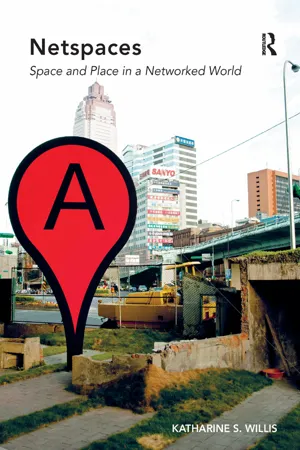Technology & Engineering
Infrastructure
Infrastructure refers to the fundamental physical and organizational structures and facilities needed for the operation of a society or enterprise. In the context of technology and engineering, it encompasses the essential components and systems that support the functioning of various technological processes and services. This can include networks, hardware, software, and other foundational resources.
Written by Perlego with AI-assistance
Related key terms
Related key terms
1 of 4
Related key terms
1 of 3
9 Key excerpts on "Infrastructure"
- eBook - ePub
Practical Guide to Clinical Computing Systems
Design, Operations, and Infrastructure
- Thomas Payne(Author)
- 2014(Publication Date)
- Academic Press(Publisher)
Chapter 4Infrastructure
David Chou Chief Technology Officer, Information Technology Services, UW Medicine; Professor, Laboratory Medicine, University of Washington, Seattle, WA USAAbstract
Infrastructure refers to those resources and items required to successfully support and operate information systems. These items include, but are not limited to, security, networks, computers and closely associated hardware, their operation and management, data centers, and desktop computers. In many cases, these items may be purchased as services from a vendor, or are a part of services supported by groups within an organization. Infrastructure items often require large capital and operational expenditures, lengthy lead times, and highly technical skills. The internal versus the acquisition of these services from commercial suppliers is usually decided by economic tradeoffs and availability of local skills. Infrastructure also refers to hardware and software for the use and management of information systems. These include software to manage identity management (users and their passwords), logins (such as single sign-on or SSO), anti-virus software, firewalls, and software for remote access. Infrastructure plays a large role in supporting the security of information systems to protect data against accidental or inappropriate destruction, alteration, or access.Keywords anti-virus software firewalls security data center power usage effectiveness HIPAA virtualization thin-clients help desk single-sign on (SSO)Contents1. Introduction 392. Data centers 402.1 Electrical power 422.2 Power distribution and backup power 442.3 Cooling 452.4 Data center reliability 462.5 Environmental protection and data center security 472.6 Data center management and remote data centers 482.7 Future of data centers 493. Servers, operating systems, and databases 504. Managing the desktop and other clients 524.1 Standardizing desktop configurations 544.2 Patching, updating, cloning, and inventory - eBook - ePub
Saving The Planet By Design
Reinventing Our World Through Ecomimesis
- Ken Yeang(Author)
- 2019(Publication Date)
- Routledge(Publisher)
internal utilities, such as within buildings and usually hidden within the walls and ducts in the built structures above ground. The urban technological Infrastructures are as follows:External technological Infrastructures
These include all networks of engineered utilities that are installed largely outside buildings. Examples include:- Road and routing systems, both above ground and underground, such as rail lines, and the vehicles that utilise them (cars, trains, buses, trucks, etc.).
- Miscellaneous structures that are part of the urban realm such as bridges and tunnels.
Underground transport systems; Docking areas, parts, airports, wharfs; Underground and undersea cables; Overhead power and telecommunication pylons and lines; Vacuum waste collections systems.- Sewerage lines and treatment systems.
- Water reticulation systems.
- Energy generation systems and electricity power lines.
- Telecommunication and IT systems.
- Urban gas systems.
- Other urban utilities.
For the sake of completeness, the conceptually mapped and regularly used routes for movement of people and goods by sea, air or space must be included, along with the vessels, aircraft and spacecraft that follow them. It may seem strange in a way to think of these amorphous media as ‘Infrastructure’. But in fact, we use many routes so often that our use leaves chemical and other ‘footprints’ such as the vapour trails of aircraft that have a significant effect on weather and climate.Internal Infrastructures in enclosures
These are the engineering systems that are installed within buildings and built structures to enable humans and human-made machinery to function effectively and efficiently within the enclosures – that is to say, within any architecturally enclosed systems, building envelopes or other structures. These are often buildings massed laterally or vertically as super-enclosures. Within them, human society takes shelter from the elements to live, reproduce, work, manufacture and recreate. These are the mechanical and electrical systems/services, of which there are a bewildering array in the modern building. They include: - eBook - ePub
RAPID Value Management for the Business Cost of Ownership
Readiness, Architecture, Process, Integration, Deployment
- Andrew Wigodsky(Author)
- 2003(Publication Date)
- Digital Press(Publisher)
7Integration: Coherent Infrastructure
7.1 Introduction
Integration is what happens when you bring architecture and processes together with your resources. Your model for integrating your IT enterprise must focus on the needs of the most integrated technologies. Infrastructure is the parts of a solution used by more than half of an organization. These components are so important that without them, you have no solution. The network, directories, email, and other Internet operations are often of such great importance to customers that the organization itself must agree to accept the standard definitions—often called Infrastructure. Maintain your Infrastructure consistently; these components are your heart and lungs. This chapter can help you learn to model integration of technology components, by discovering how the relationship between architecture and process affects the day-to-day operational components of IT. The section on operations Infrastructure explains how the Infrastructure supports core services and the integration needs of all IT systems and processes. The section on operations management can help you manage the day-to-day operations of your IT environment, and the section on operations support addresses the needs of incident- and problem-based support for stakeholders.What are operations?
Operations are the day-to-day processes; the ways most IT support staff spend their workday. It is important to continually improve these Infrastructures and remove complexity. What does it mean to reduce complexity of your Infrastructure? Why is it important in the first place? One HP presenter explained some of the most common customer concerns: (See Table 7.1 )Table 7.1 Challenges to IT operationsHow do you manage operations?
Operations are systems—they are one in the same. Operations are when you integrate architecture and process with the actual components; putting resources to work on activities under known constraints and well-communicated expectations. The answer to effective operations is having the right resources make the right decisions at the right time, just in time. Too often, we consider that the only way to manage operations is to have a single person or vendor responsible for a number of computer “boxes” that happen to be running software. IT departments change focus, almost cyclically, between architecture and process—without maintaining the investment between cycles. In fact, the only method of managing IT operations that has proved effective over time is the balanced application of Infrastructure and software management. - eBook - ePub
The Remote Work Handbook
The Definitive Guide for Operationalizing Remote Work as a Competitive Business Strategy
- Mari Anne Snow(Author)
- 2022(Publication Date)
- Productivity Press(Publisher)
A quick disclaimer, there is no one way to accomplish remote work Infrastructure and I don’t intend to do a deep dive into today’s specific Infrastructure technology choices as the choices are endless and changing by the minute. Nor do I have specific technical or product recommendations. If I do reference a product, it’s to highlight a concept. It’s not an endorsement. I’m not a network administrator, cloud computing, cybersecurity, or a technology expert and don’t claim to be. My goal is to elevate your awareness of the important part technology plays in remote work. Technical Infrastructure is a necessary component and I’m starting with it because remote work can’t exist without it. I want to provide you with enough background so you can ask the right questions of the experts you consult as part of your planning process. Most businesses will leverage third-party solutions for some or all their remote work Infrastructure. Finding reputable options is vital. To do this, you need to know some of the basics.Every remote work organization these days leverages internet service providers (ISPs) and the cloud in some way. But there is no single configuration. Your Infrastructure must complement your business objectives. You will need help building it, testing it, deploying it, keeping it secure, and maintaining it. There are lots of ways to do this. Some companies invest in a capable internal team. This team will look quite different than previous network administration teams that supported a traditional hardwired on-premises local area network (LAN). Today’s IT (Information Technology) teams are much smaller and more reliant on technical versatility, and critical thinking skills. They must be good problem solvers and keep learning new, emerging technology trends to stay ahead of new technology to maintain their relevance. Some companies outsource everything through strategic partnerships with third party IT Service Management (ITSM) technology vendors. Most companies have a cobbled together solution that combines the two.Everything I discuss in this chapter has distinct pros and cons for your business. It’s not for me to say which one is best for you. I’m highlighting the components to ensure you include them in your plan and ensure you have what you need to do your due diligence during your implementation. I’ve defined Infrastructure as one big technology component that encompasses internet connectivity, hardware, software, strategy, support, system/business processes, and security. This is because interoperability – the seamless knitting of many systems so they work effectively as one integrated system supports your remote work business operation. In preparation for this chapter, I reached out to several trusted chief information officer (CIO) colleagues and expert technology partners to get their perspective on remote work Infrastructure today, and I’ve synthesized their feedback into the following categories: - eBook - ePub
System of Systems Engineering
Innovations for the 21st Century
- Mohammad Jamshidi, Andrew P. Sage(Authors)
- 2011(Publication Date)
- Wiley(Publisher)
Chapter 11 System of Systems Perspectives on Infrastructures WIL A.H. THISSEN and PAULIEN M. HERDER Delft University of Technology, The Netherlands 11.1 INTRODUCTIONThe functioning of modern society to a large degree depends on the quality of the infrastructural facilities available. Physical Infrastructures such as networks for transport, water and energy provision, waste removal, and telecommunications provide the basic conditions for the functioning of individuals and businesses. Technological progress and the shift to a predominantly service–oriented economy have brought the information, telecommunication, and knowledge Infrastructures to the forefront.Over time, Infrastructures have become increasingly critical to the functioning of society, as economic and social processes to a large extent rely on the services provided by such systems. Failure of these Infrastructures is one of the most important vulnerabilities of modern society as has been demonstrated by the detrimental effects of interrupted water provision, electricity blackouts, or failing telecommunications in the past.Historically, Infrastructures have been physically and logically separated systems. Advances in technology, and especially in information technology, however, have led to an integration and interlinking of the various Infrastructures. Many of the critical Infrastructures depend upon a stable and reliable electricity supply. Failure in the electricity Infrastructure consequently harms many aspects of society. Similarly, information and communication technology (ICT) systems have become crucial for the functioning of most if not all other Infrastructure systems (and for many other sectors as well).In addition to the inherent vulnerability of the interconnected Infrastructures, many of them are or have been in institutional change processes, such as privatization and liberalization processes. This seriously complicates the matter of reliable and safe design and operation of the Infrastructures, because many more actors are involved in the system, each with their own goals and objectives. Especially the interplay between technological, behavioural, and institutional factors and sometimes the rapid expansion of the number of public and private parties involved increase the complexity of the infrasystem. Further, the increasing transboundary dependencies require analysis and design at the international level for technological and institutional innovations. Finally, the tensions between market concerns addressing (short term) economic gains and quality of service, issues of equity and fairness, and long–term sustainability requirements complicate the design and operation of infrasystems. - eBook - ePub
- Mark Lovatt(Author)
- 2021(Publication Date)
- BCS, The Chartered Institute for IT(Publisher)
Map SBBs to Infrastructure services , itemising Infrastructure services and components that meet the solution requirements.- Define networking Infrastructure , modelling the connectivity required to fulfil the needs of the interfaces between solution and Infrastructure components.
- Iteratively refine to meet functional requirements and NFRs , testing the target Infrastructure architecture against the solution requirements and making modifications where necessary.
- Assure end-to-end security , assessing the solution and Infrastructure architectures against security standards and removing or mitigating vulnerabilities.
- Identify gaps in Infrastructure services , itemising any gaps in provision or capacity and reporting on the costs and other implications for change.
- Validate the solution technology definition , reviewing with senior stakeholders and obtaining sign-off from the business.
7.2 PRECURSORS, REQUIREMENTS AND CONTEXTThe starting point for solution technology definition is the solution design. This contains the components and interfaces that make up the solution and define its scope.Any technology needed for the solution must be within this scope. For both solution and Infrastructure architecture, however, impacts may extend beyond the scope of the solution. For example, a change to an existing system could impact other users even though they are out of scope for the solution.Other models, artefacts and documents can provide additional detail to support the process of solution technology definition. The solution architecture team is responsible for making all necessary information available for use by the Infrastructure architecture function and any other roles involved. This can include: - eBook - ePub
Local Positioning Systems
LBS Applications and Services
- Krzysztof W. Kolodziej, Johan Hjelm(Authors)
- 2017(Publication Date)
- CRC Press(Publisher)
Applications access the Infrastructure to retrieve context information. Sensors are linked to the Infrastructure to provide it with their sensor information (which includes location, but may also include other types of information, such as temperature, light level, etc.). Using such an Infrastructure allows applications to access context information that has been captured by sensors far away from their current position, but requires mobile devices and sensors to be connected to the Infrastructure, as all communication takes place through the Infrastructure. This can become costly, e.g., in terms of energy usage.Context-aware computing relies on an available Infrastructure that has a globally accessible data repository. This gives a well-known access point with a consistent information model, which enables distributed applications to interact with their environment according to the model and their location. Mobile nodes in such systems require access to the Infrastructure in order to access stored model data.The role of the Infrastructure is crucial when deploying location-based applications. There are four types of Infrastructure: the sensors (i.e., the ranging and triangulation devices), the communications network (through which the sensors provide their information to other parts of the system), the terminals and servers (i.e., the hardware on which the system runs), and the software (service) Infrastructure. This might be the most important since it is not tied to the user directly. More specifically, this Infrastructure determines what the user sees on his mobile device and how he or she interacts with it.FIGURE 3.1 Conceptual layout of the system Infrastructure.Most current applications are based on proprietary technologies, closed architectures, and full systems. The assumption is that everything should be bought from one vendor. While a good start, these stand-alone (stovepipe or silo) systems are unlikely to have a large impact on the marketplace, primarily because of the heterogeneity stemming from lack of interoperability, which prevents application integrations and service chaining. This means that there is no way for an application to share, access, or control the sensing resources without knowing the sensor and the network specifications. Moreover, there is no consensus on common standards for designing these applications, and as a result, there is no common software platform on which to build such applications that would enable easier deployment (Figure 3.2 - eBook - ePub
Netspaces
Space and Place in a Networked World
- Katharine S. Willis(Author)
- 2017(Publication Date)
- Routledge(Publisher)
The innocuous building at the centre of the 22@ district in Barcelona; the Tanger power plant actually turns out be more important than it looks. When we unpick the ways that the assemblages of network Infrastructures interweave with other networks, then it transpires that energy networks and data networks are now tightly linked. In this chapter we looked at how various ways of assembling the city are understood and how network Infrastructure adapts to these contexts. Network Infrastructures are made up of components; both software and hardware, pieces of electronic equipment, cables, pipes and the service Infrastructure that keep it working. The point at which they are recognised as Infrastructure is the way in which they are organised or connected into some form of complex framework operating at a number of scales simultaneously. But at the heart of this way of thinking about Infrastructure is the fundamental anomaly that a ‘whole’ is never realised; the meshworks or assemblages are also in the point of being created and recreated. If we are to be able to make sense of the city then to some extent we must come to ‘know’ how these structures work and how they are realised spatially. This is about a level of translucency, not in the visual sense, but of a level of understanding that enables us to see the various parts of a system and how they connect. What the case study of data centres shows is that not only are data centers and other network Infrastructures ‘black-boxed’ and made technically and visually inaccessible within urban structures, they are also almost without exception lacking in any form of social context. Under the guise of security concerns, they are one of the most inaccessible building types; located in remote, non-urban settings and protected with incredibly high levels of security. But most tellingly the massive physical, data and energy footprint of these Infrastructures requires no people. The assemblages have almost no social connections or capacity, only technical. This raises clear challenges for whether we will choose to find ways to integrate and recognise these network Infrastructures into the fabric of the everyday life of the city, or whether we will continue to disassociate and deny the presence of the ever growing black boxes of our reliance on network assemblages.REFERENCES
Ajuntament de Barcelona (n.n.) 22@Barcelona, the innovation district - Robert J. Grover Professor Emeritus, Roger C. Greer, Herbert K. Achleitner, Kelly Visnak(Authors)
- 2015(Publication Date)
- Libraries Unlimited(Publisher)
The vascular system is responsible for continuing life, just as the information Infrastructure carries information to support and enhance life. The vascular and nervous systems respond to the environment just as the information Infrastructure, also a complex system, responds to the environment, including technology, policies, and culture. The information Infrastructure is complex and interactive with other information-related organizations, systems, and services, and technology has enabled many changes in the information transfer processes, as described in the next section.Technology Enhances Information TransferIn Chapter 3 we trace the development of many technologies that support information transfer, including transportation and communication technologies. Advances in computer technologies shook the world’s information Infrastructure during the 20th century, especially in the recording, mass production, dissemination, diffusion, and utilization of information.Technology has the capability of collapsing traditional barriers to the transfer of information including distance, time, and even physical disabilities. Communication satellites provide citizens worldwide access to news events as they are happening. Cell phones enable individuals anywhere in the world to have conversations with anyone else regardless of location, and these cell phones provide a vehicle for transferring text and visual information to a wide audience through such social media as Facebook and Twitter. Furthermore, recorded information can be stored in computer files and made openly available to anyone in the world with access to computer technology. How technology has changed information transfer processes is examined in detail in Chapter 5.Other Environmental InfluencesTechnology is only one of the environmental variables that influence information transfer and the information Infrastructure. Others are culture, geography, political structure, legislation, economic system, and information policy, as explained in Chapter 2. These variables are external to the practice of the library and information professions, and we call them “the environmental and social context” (Greer, Grover, and Fowler 2013, 53–57).
Index pages curate the most relevant extracts from our library of academic textbooks. They’ve been created using an in-house natural language model (NLM), each adding context and meaning to key research topics.
Explore more topic indexes
Explore more topic indexes
1 of 6
Explore more topic indexes
1 of 4








